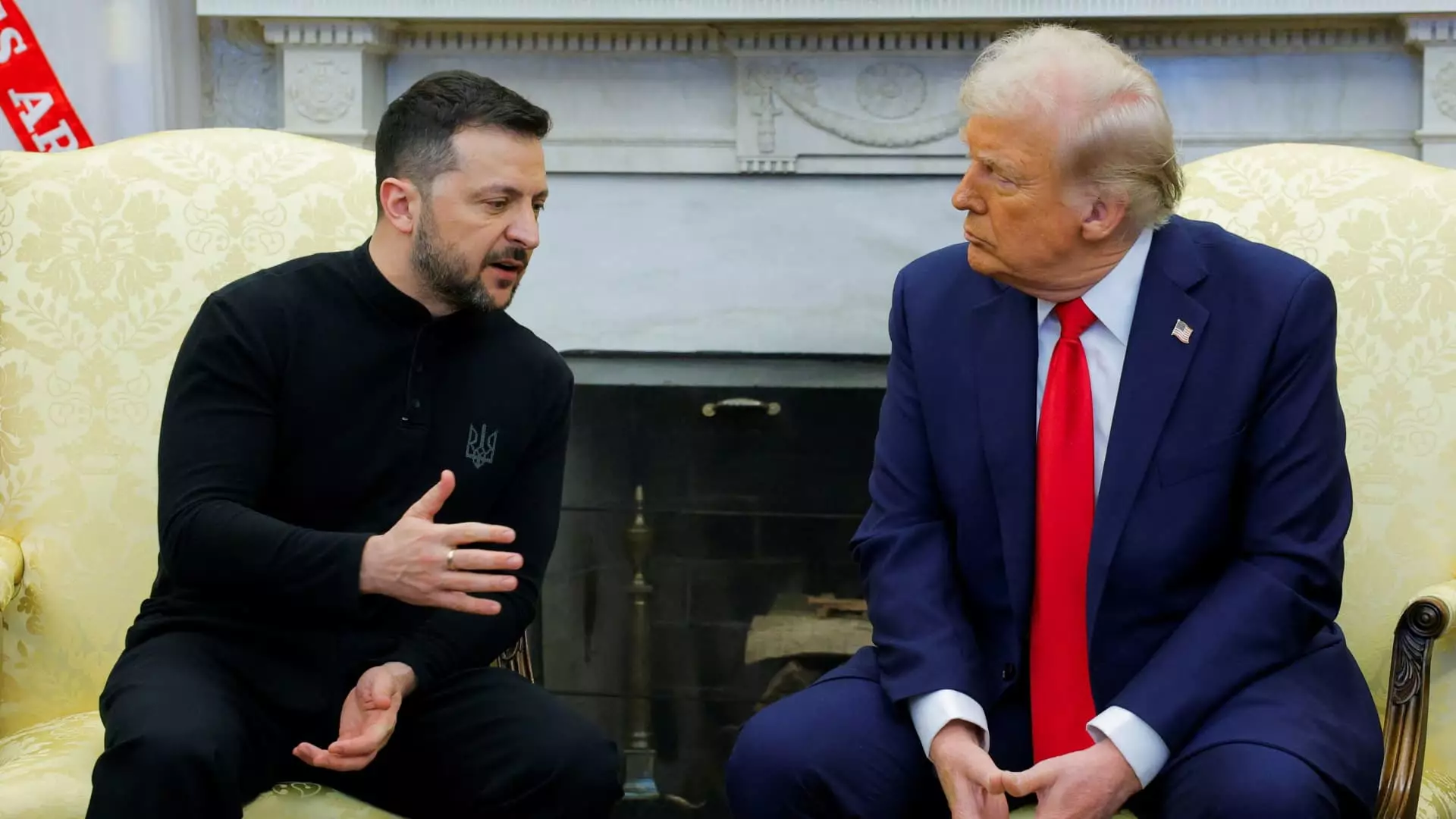In a world where diplomacy often takes a backseat to virulence and vitriol, the recent meeting between U.S. President Donald Trump and Ukrainian President Volodymyr Zelenskyy at St. Peter’s Basilica in Rome stands as a poignant illustration of the complexity of international relations. Set against the backdrop of a somber funeral for Pope Francis—a pontiff who made it his mission to advocate for peace—this encounter served to underscore both leaders’ desperate attempts to forge a viable resolution to the ongoing conflict between Ukraine and Russia. However, while both parties portray the meeting as “productive” and even “historic,” a deeper analysis reveals a far more complicated landscape of conflicting agendas and superficial gestures.
Symbols Over Substance
Zelenskyy’s comments regarding the potential of their meeting resonate with optimism, but can we truly believe that this exchange will yield meaningful results? The tenor of their 15-minute conversation was drowned out by a cacophony of political maneuverings, where the rhetoric of peace clashes with the reality of entrenched positions. The Ukrainian president’s repeated emphasis on the need for a “complete and unconditional ceasefire” reveals his awareness of the impossibility of negotiating under current conditions, particularly when the very territorial integrity of Ukraine is at stake.
Trump’s insistence that Crimea should be recognized as Russian territory—a proposition received with horror by Kyiv—is a fundamental red line that speaks volumes about the divide between U.S. and Ukrainian interests. The meeting may have been held in a religious edifice steeped in symbolism, but the actual content of their discussion reflects a stark deviation from any genuine commitment to peace. As significant as such meetings appear, it would be naive to believe that understanding can flourish amid conflicting foundational beliefs.
The Power Dynamics at Play
The historical undercurrents of the Trump-Zelenskyy relationship cannot be overlooked. Their prior Oval Office clash, marked by harsh accusations and personal attacks, looms over this recent meeting like a dark cloud. Trump’s pointed remark that Zelenskyy was “gambling with World War Three” reveals his inability to appreciate the gravity of Ukraine’s plight, a sentiment echoed by Zelenskyy when he referred to Trump’s “disinformation bubble.” This mutual distrust complicates any potential for goodwill; they operate as adversaries rather than collaborators.
Yet, despite their rocky personal history, both leaders find themselves ensnared in a web of interdependence. Trump requires Zelenskyy’s cooperation to solidify his position as a peacemaker, eager to appear as the president who brokered a truce in a brutal conflict. Conversely, Ukraine is desperate for U.S. support to counter Russian aggression, even if it means endorsing an agreement that compromises their national integrity. This power imbalance underscores the precarious nature of their alliance and renders it susceptible to outside influences and internal strife.
The Role of Global Politics
Russia’s ongoing aggression is a contentious issue that hangs like a specter over this meeting and many others. The glaring differences in negotiating positions between the Trump administration and Ukraine highlight the complexity of finding a feasible resolution. With sanctions and territorial integrity at the forefront of discussions, any call for a “productive” dialogue must contend with the sobering reality that global politics often exacerbate rather than alleviate tensions.
Further compounding the issue is the varying stances of European allies, who remain staunchly opposed to recognizing Crimea as part of Russia. This division introduces yet another layer of political complexity that neither Trump nor Zelenskyy can afford to ignore, yet it seems largely unaddressed in their shared optimism. European countries, who have stood firm in support of Ukraine, may find themselves at odds with a U.S. administration willing to sacrifice critical principles for what it deems “peace.”
The Cost of Appearances
Zelenskyy’s choice to reject formal attire during such a significant meeting—a military-style jacket replacing the conventional suit—reflects a powerful statement of solidarity with his troops, a contrast to Trump’s traditional sartorial choices. This choice illustrates the conflicting narratives at play: while Trump seeks to project authority, Zelenskyy embodies a spirit of resilience that resonates deeply with his war-ravaged nation.
However, can these symbolic gestures truly mask a foundational divide? The contrast in their styles is telling; it not only signifies their differing approaches to leadership but also reminds us that appearances often obfuscate the true nature of political negotiations. The question persists: will the pretense of cooperation yield genuine results, or will it simply serve to placate an international audience desperate for signs of progress?
In sum, while the Trump-Zelenskyy meeting at the Vatican may be presented as a moment of harmony, the underlying fissures suggest otherwise. The intricate dynamics of their interaction unveil a central truth: the road to peace is fraught with contradictions, and unless both leaders confront these challenges with earnestness, history may very well deem their exchange as another missed opportunity rather than a herald of peace.


Leave a Reply